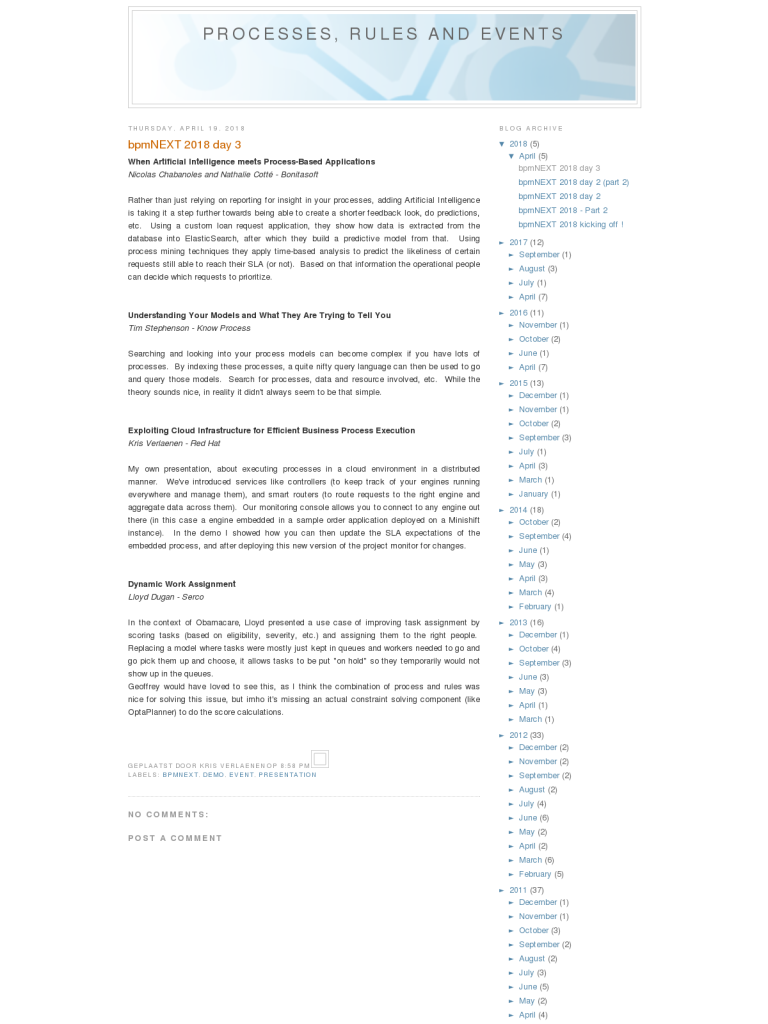When Artificial Intelligence meets Process-Based Applications
Nicolas Chabanoles and Nathalie Cotté – Bonitasoft
Rather than just relying on reporting for insight in your processes, adding Artificial Intelligence is taking it a step further towards being able to create a shorter feedback look, do predictions, etc. Using a custom loan request application, they show how data is extracted from the database into ElasticSearch, after which they build a predictive model from that. Using process mining techniques they apply time-based analysis to predict the likeliness of certain requests still able to reach their SLA (or not). Based on that information the operational people can decide which requests to prioritize.
Understanding Your Models and What They Are Trying to Tell You
Tim Stephenson – Know Process
Searching and looking into your process models can become complex if you have lots of processes. By indexing these processes, a quite nifty query language can then be used to go and query those models. Search for processes, data and resource involved, etc. While the theory sounds nice, in reality it didn’t always seem to be that simple.
Exploiting Cloud Infrastructure for Efficient Business Process Execution
Kris Verlaenen – Red Hat
My own presentation, about executing processes in a cloud environment in a distributed manner. We’ve introduced services like controllers (to keep track of your engines running everywhere and manage them), and smart routers (to route requests to the right engine and aggregate data across them). Our monitoring console allows you to connect to any engine out there (in this case a engine embedded in a sample order application deployed on a Minishift instance). In the demo I showed how you can then update the SLA expectations of the embedded process, and after deploying this new version of the project monitor for changes.
Dynamic Work Assignment
Lloyd Dugan – Serco
In the context of Obamacare, Lloyd presented a use case of improving task assignment by scoring tasks (based on eligibility, severity, etc.) and assigning them to the right people. Replacing a model where tasks were mostly just kept in queues and workers needed to go and go pick them up and choose, it allows tasks to be put “on hold” so they temporarily would not show up in the queues.
Geoffrey would have loved to see this, as I think the combination of process and rules was nice for solving this issue, but imho it’s missing an actual constraint solving component (like OptaPlanner) to do the score calculations.








